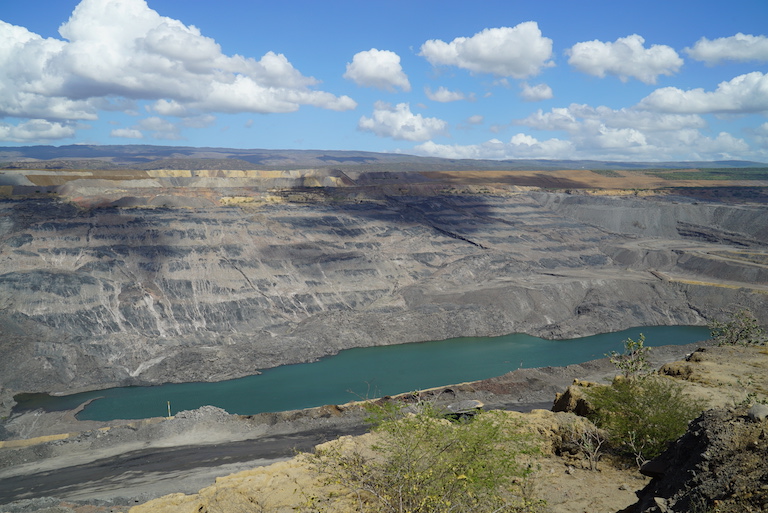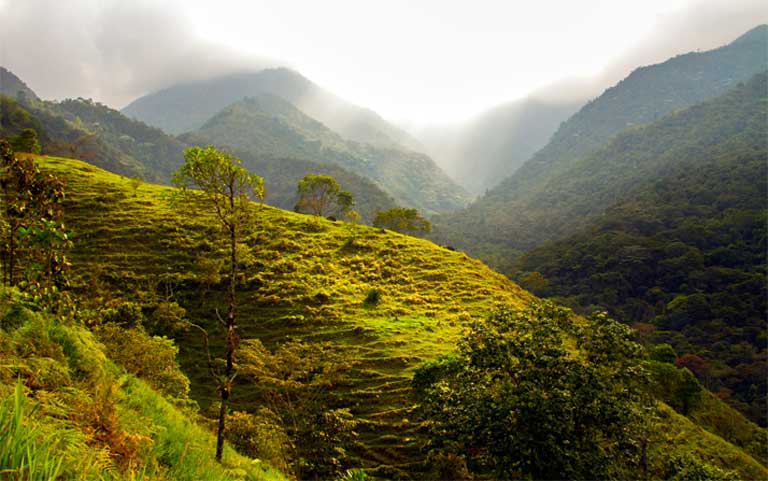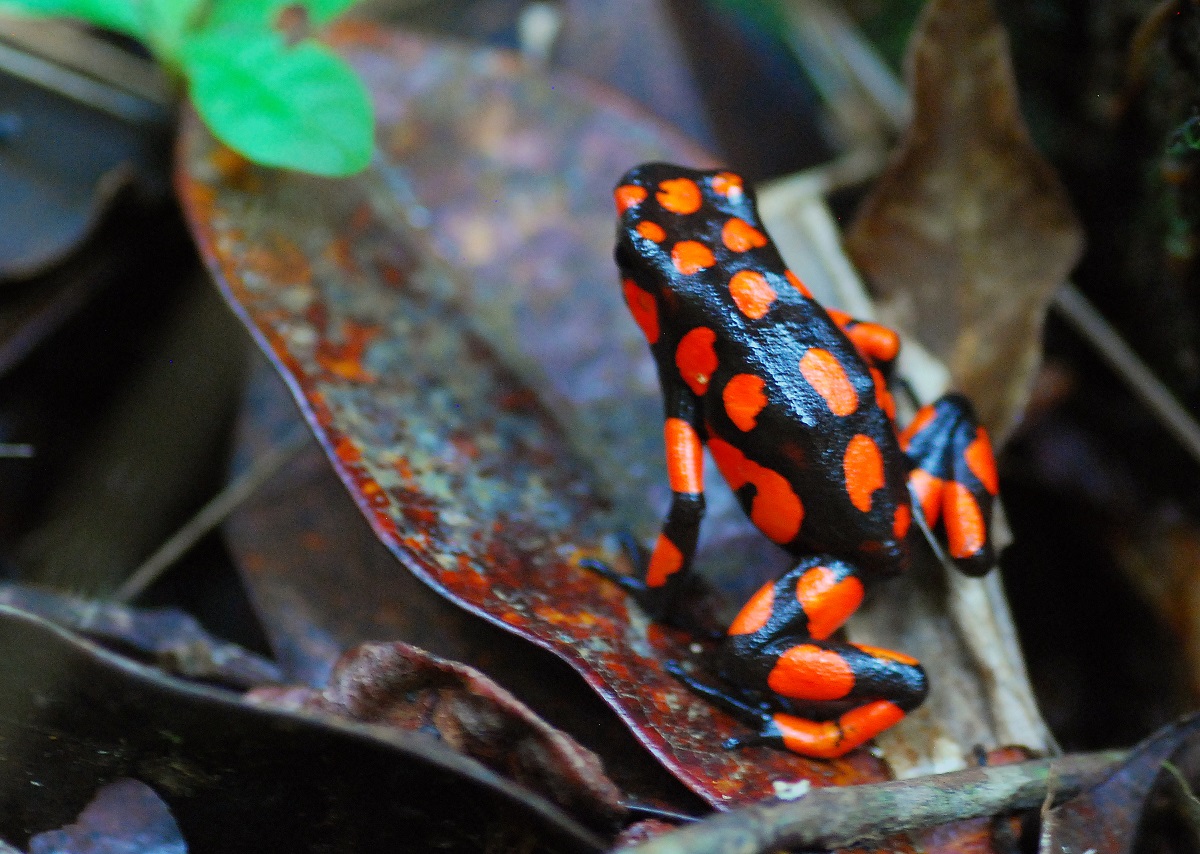In less than a generation, legal mining in Colombia deforested over 120,000 hectares
Jun 8, 2021
- A study by researchers in Colombia found that forest clearing by legal mining operations has increased sharply in recent years.
- The study shows that just 1% of the 8,600 legal mining concessions in the country account for 60% of the deforestation associated with the sector.
- The authors say that if mining titles continue to be granted at current rates, Colombia could lose 400,000 hectares (990,000 acres) of forest from legal mining alone over the next two decades.
Legal mining in Colombia is a significant driver of deforestation, contributing to the destruction of 121,819 hectares (301,021 acres) of forest from 2001 to 2018. During that time, deforestation from legal mining has increased, accounting for 5.6% of total deforestation in 2017.
Of the 8,600 mining concessions with permits granted by the Colombian government, researchers found that only 100 contribute to most of the deforestation. At least 400 hectares (990 acres) of forest was cleared in each of these concessions, an area larger than 500 soccer fields, during the nearly two decades studied.
Effectively, just 1% of concessions contributed to 60% of deforestation from legal mining — although why is unclear, given that mining doesn’t call for massive forest clearing.
These are among the key findings from a study published May 26 in the journal Environmental Research Letters by researchers Andrés González, Nicola Clerici and Benjamín Quesada from Universidad del Rosario, in Bogotá, Colombia.
According to the paper, legal mining has historically been overlooked as a driver of deforestation, with illegal mining occupying a much higher profile in this regard. It shows that deforestation due to legal mining increased after the signing of a peace agreement in 2016 ending decades of civil war between the Colombian government and FARC guerrillas. That milestone was followed by the worst year for deforestation resulting from mining, with 22,000 hectares (54,400 acres) of forests cleared in 2017.
“In 2019, Clerici and I were analyzing the deforestation figures in Colombia provided by the Institute of Hydrology, Meteorology and Environmental Studies (Ideam), and we realized that only traditional causes were mentioned as drivers of deforestation, such as the opening of pastures for cattle and illicit crops, but nowhere was the impact of mining quantified, so we decided to analyze this factor,” Quesada, an expert in climate and environmental science, told Mongabay in an interview.
According to Quesada, he and his colleagues analyzed how Colombian forests had been transformed in areas where mining concessions occurred. These included operations for gold, silver, platinum, non-precious metals, emeralds, construction material, and coal. They used satellite images from NASA’s Landsat program, with a resolution of 30×30 meters (98×98 feet).
“The satellites do not lie when it comes to observing extensive forest changes,” Quesada said.

Forest lost to mines
The study estimated that for every kilogram of gold legally mined in Colombia, 20 trees are cut down. For every 1,000 tons of coal, 10 trees are logged. Most of this deforestation is concentrated in the departments of Antioquia, Bolívar and Norte de Santander. The study found that 23% of the recent deforestation in Antioquia, a major producer of gold, takes place in legal mining concessions.
“Of the top 10 mega-deforestation legal concessions, we can say several things: each of these polygons has a deforestation of more than 1,600 hectares [4,000 acres], and five of the 10 most deforesting concessions are in the municipality of Remedios [in Antioquia], a city of 20,000 inhabitants,” Quesada said.
Although the study doesn’t directly name the concession holders responsible for the deforestation, Mongabay obtained the information from the researchers. It shows that the three companies that have cut down the most forests are Carbones del Cerrejón LLC (4,710 hectares, or 11,639 acres), Midrae Gold S.A.S, (2,765 hectares, or 6,832 acres), and Cerro Matoso SA (2,654 hectares, or 6,558 acres).
In response to Mongabay’s questions about the conclusions of the study, Cerrejón, one of the largest mining companies in Colombia, claims that the information doesn’t include information about the reforestation work carried out after the clearing.
“In addition, concerning Cerrejón, it seems not to take into account that when the company acquired the properties, these were pastures and wooded pastures,” said Luis Francisco Madriñán, environmental management manager for Cerrejón.
However, researcher Clerici refutes that by saying that the dataset spots deforestation, i.e. forest areas (or very dense wooded pastures) converted to non-forest areas. “Pastures are not considered as a starting land cover”, he says.
Madriñán said the company had planted more than 2 million trees, which he added was significantly more than had been cleared, and runs a program to reach 8 million in the coming years.
“All the forest exploitation that has been carried out has had the permits of the corresponding environmental authorities and, between 1999 and 2018, Cerrejón rehabilitated 3,901 hectares [9,640 acres] that today is high and low secondary vegetation, which is going to become a forest in the following years thanks to the conservation and reforestation work of the company,” Madriñán noted.
Midrae Gold, the No. 2 company on the list (it is registered in Medellín, but barely appears on Google and does not even have a website) said that although it appears as the holder of several mining titles, it is not responsible for the deforestation. “The company never did mining in any of those. Therefore it has not caused any deforestation, and no title reached the exploitation stage,” Joaquin Guillermo Ruiz, representative of the company, told Mongabay in an interview.
In response, Clerici says that their work does not discuss the accountability of the firm with respect to deforestation. It just estimated forest to non-forest land inside its mining concession(s). “So, who deforested there? He asks.
Cerro Matoso, the third company, and also a very recognized firm in the Colombian mining sector, said its mining activity affected just 274 hectares (677 acres) of forest from 2001 to 2018. “All activities are carried out in full compliance with Cerro Matoso’s environmental license and under the supervision of the relevant local and national authorities,” Ricardo Gaviria, president of the company, said in an email.
Gaviria said the company has conducted “rehabilitation and preservation of local forests across over 1,027 hectares [2,537 acres] — nearly four times the area disturbed.” He also stated that the company works with neighboring communities in the reforestation process, including growing and planting native tree species, and forest maintenance.
“In 2020, it planted 62,000 trees, an increase of 32% from 2019,” Gaviria added, similar to what is noted on their website.

Limited impacts of reforestation
The study authors, however, estimate that reforestation is on average limited. And that the impact associated to primary forests in terms of biodiversity and ecosystems services is not fully compensated by reforestation, which is nevertheless a fundamental task”, Clerici noted
For the study, the authors sent an official request to the Ministry of the Environment and the National Environmental Licensing Agency (ANLA), in charge of granting mining permits in Colombia, for a list of mining projects that had requested forest harvesting or logging permission from 2001 to 2018.
According to information obtained by the report authors obtained from the authorities shows that only 20-30 mining companies out of the 8,600 legally registered concession holders requested authorizations for this type of operation.
“The Regional Autonomous Corporations, which have sanctioning power in these cases, are not evaluating the impact of mining companies on forests, but rather are focusing on issues such as the social security of miners, the possible chemical spills, and water use in mines, but not in damage to forests,” Quesada said. “What we think is that, although these concessions work on safe land because the activities that take place in them are legal, the authorities are not going there to do the proper vigilance.”
Asked by Mongabay whether it was aware of deforestation in legal mining areas, ANLA said it recommends preventing or minimizing any forest clearing, or, as a last resort, compensating for it. The agency said that it is responsible for evaluating, granting and monitoring environmental licenses, among which instruments are the use and exploitation of natural resources.
“The Forest Exploitation Permit links measures to ensure the renewability of the resource in areas where, based on technical studies, better aptitude for the use of land other than forest is demonstrated, or when there are reasons of public utility and social interest,” an ANLA spokesperson who declined to be named said in an email.
“However, during the evaluation process, the mitigation hierarchy is applied, where, before authorizing the impact, it is sought to prevent, minimize and correct it, and, as a last measure, compensate it,” they added.
“Considering the mining projects as deforestation drivers would imply that the principles of no net loss of biodiversity are not being met,” ANLA said. “It is pertinent to clarify that actions that contribute to deforestation are not approved within the framework of environmental licensing,” ANLA said.

Collateral damage
According to the study authors, if all the mining applications pending today are granted and deforestation caused by legal mining is not stopped, Colombia could lose an additional 400,000 hectares (990,000 acres) of forest in the next two decades. This would have catastrophic implications for the loss of habitat in what is considered the second most biodiverse country in the world.
They also note that deforestation from mining contributes significantly to the failure to reduce greenhouse gas emissions from the mining sector in Colombia.
“We estimate that the carbon loss due to logging in Colombian legal mines is equivalent to 34.3 MtCO2 [millions of tons of carbon dioxide equivalent], due to the forests cut down in mining. In other words, it would add 30% more carbon footprint to the mineral industry sector,” Quesada said.
But the study also showed reason for optimism. It found that around half of the concessions deforest less than one hectare; of these, some 2,500 concessions recorded barely any forest loss (less than 0.09 hectares, or 0.2 acres).
“This means that there are good practices in the sector and that there can be mining without deforesting,” Quesada said. “This argument can be advanced so that the sector commits itself to each concession stop deforesting more than 1 hectare. There could also be active monitoring with the help of IDEAM and environmental authorities. This would allow the sector’s carbon footprint to be reduced by 90%.”
The authors say they’re not taking a stance on saying whether mining is good or bad, but simply presenting information that can help improve monitoring, prevent unreasonable rates of deforestation, and contribute to the self-regulating and sanctioning of the sector.
Citation:
González-González, A., Clerici, N., & Quesada, B. (2021). Growing mining contribution to Colombian deforestation. Environmental Research Letters, 16(6), 064046. doi:10.1088/1748-9326/abfcf8
Banner image: Small-scale deforestation in the Colombian Amazon. Photo by Rhett A. Butler/Mongabay.